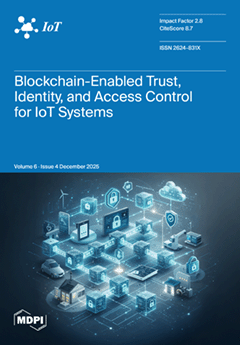The adverse propagation environment in underground coal mine tunnels caused by enclosed spaces, rough surfaces, and dense scatterers severely degrades reliable wireless signal transmission, which further impedes the deployment of IoT applications such as gas monitors and personnel positioning terminals. However, the conventional
[...] Read more.
The adverse propagation environment in underground coal mine tunnels caused by enclosed spaces, rough surfaces, and dense scatterers severely degrades reliable wireless signal transmission, which further impedes the deployment of IoT applications such as gas monitors and personnel positioning terminals. However, the conventional power enhancement solutions are infeasible for the underground coal mine scenario due to strict explosion-proof safety regulations and battery-powered IoT devices. To address this challenge, we propose singular value decomposition-based Lagrangian optimization (SVD-LOP) to minimize transmit power at the mining base station (MBS) for IRS-assisted coal mine wireless communication systems. In particular, we first establish a three-dimensional twin cluster geometry-based stochastic model (3D-TCGBSM) to accurately characterize the underground coal mine channel. On this basis, we formulate the MBS transmit power minimization problem constrained by user signal-to-noise ratio (SNR) target and IRS phase shifts. To solve this non-convex problem, we propose the SVD-LOP algorithm that performs SVD on the channel matrix to decouple the complex channel coupling and introduces the Lagrange multipliers. Furthermore, we develop a low-complexity successive convex approximation (LC-SCA) algorithm to reduce computational complexity, which constructs a convex approximation of the objective function based on a first-order Taylor expansion and enables suboptimal solutions. Simulation results demonstrate that the proposed SVD-LOP and LC-SCA algorithms achieve transmit power peaks of
and
, respectively, which are slightly lower than the
observed for the SDR algorithm. It is evident that these algorithms remain well below the explosion-proof safety threshold, which achieves significant power reduction. However, computational complexity analysis reveals that the proposed SVD-LOP and LC-SCA algorithms achieve
and
respectively, which offers substantial reductions compared to the SDR algorithm’s
. Moreover, both proposed algorithms exhibit robust convergence across varying user SNR targets while maintaining stable performance gains under different tunnel roughness scenarios.
Full article





